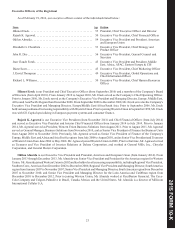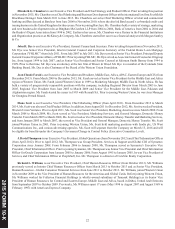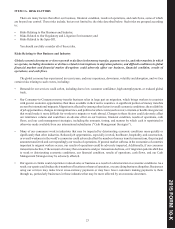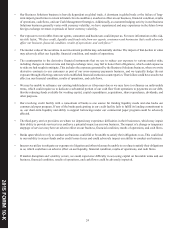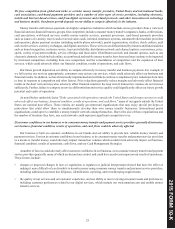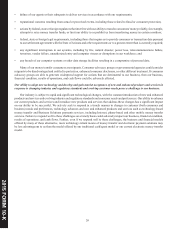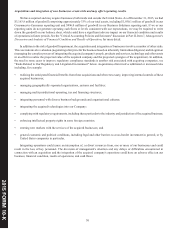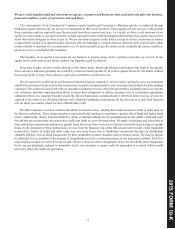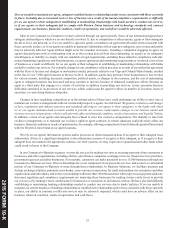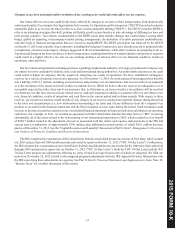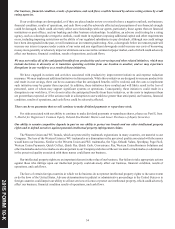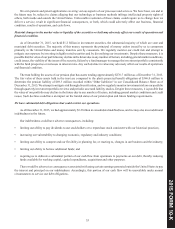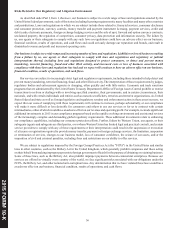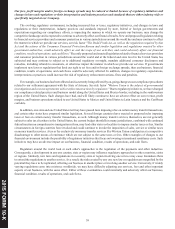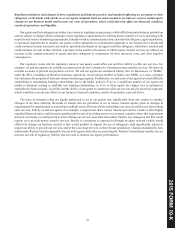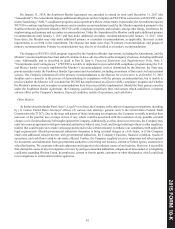Western Union 2015 Annual Report Download - page 133
Download and view the complete annual report
Please find page 133 of the 2015 Western Union annual report below. You can navigate through the pages in the report by either clicking on the pages listed below, or by using the keyword search tool below to find specific information within the annual report.
31
We face credit, liquidity and fraud risks from our agents, consumers and businesses that could adversely affect our business,
financial condition, results of operations, and cash flows.
The vast majority of our Consumer-to-Consumer money transfer and Consumer-to-Business activity is conducted through
third-party agents that provide our services to consumers at their retail locations. These agents sell our services, collect funds
from consumers and are required to pay the proceeds from these transactions to us. As a result, we have credit exposure to our
agents. In some countries, our agent networks include superagents that establish subagent relationships; these agents must collect
funds from their subagents in order to pay us. We are not insured against credit losses, except in certain circumstances related
to agent theft or fraud. If an agent becomes insolvent, files for bankruptcy, commits fraud or otherwise fails to pay money order,
money transfer or payment services proceeds to us, we must nonetheless pay the money order, complete the money transfer or
payment services on behalf of the consumer.
The liquidity of our agents is necessary for our business to remain strong and to continue to provide our services. If our
agents fail to settle with us in a timely manner, our liquidity could be affected.
From time to time, we have made, and may in the future make, short-term advances and longer term loans to our agents.
These advances and loans generally are secured by settlement funds payable by us to these agents. However, the failure of these
borrowing agents to repay these advances and loans constitutes a credit risk to us.
We are exposed to credit risk in our Business Solutions business relating to: (a) derivatives written by us to our customers
and (b) the extension of trade credit when transactions are paid to recipients prior to our receiving cleared funds from the sending
customers. The credit risk associated with our derivative contracts increases when foreign currency exchange rates move against
our customers, possibly impacting their ability to honor their obligations to deliver currency to us or to maintain appropriate
collateral with us. If a customer becomes insolvent, files for bankruptcy, commits fraud or otherwise fails to pay us, we may be
exposed to the value of an offsetting position with a financial institution counterparty for the derivatives or may bear financial
risk for those receivables where we have offered trade credit.
We offer consumers in select countries the ability to transfer money utilizing their bank account or credit or debit card via
the Internet and phone. These transactions have experienced and continue to experience a greater risk of fraud and higher fraud
losses. Additionally, money transfers funded by ACH, or similar methods, are not preauthorized by the sender's bank and carry
the risk that the account may not exist or have sufficient funds to cover the transaction. We apply verification and other tools to
help authenticate transactions and protect against fraud. However, these tools are not always successful in protecting us against
fraud. As the merchant of these transactions, we may bear the financial risk of the full amount sent in some of the fraudulent
transactions. Issuers of credit and debit cards may also incur losses due to fraudulent transactions through our distribution
channels and may elect to block transactions by their cardholders in these channels with or without notice. We may be subject
to additional fees or penalties if the amount of chargebacks exceeds a certain percentage of our transaction volume. Such fees
and penalties escalate over time if we do not take effective action to reduce chargebacks below the threshold, and if chargeback
levels are not ultimately reduced to acceptable levels, our merchant accounts could be suspended or revoked, which would
adversely affect our results of operations.
201 FORM 10 K
5 -


